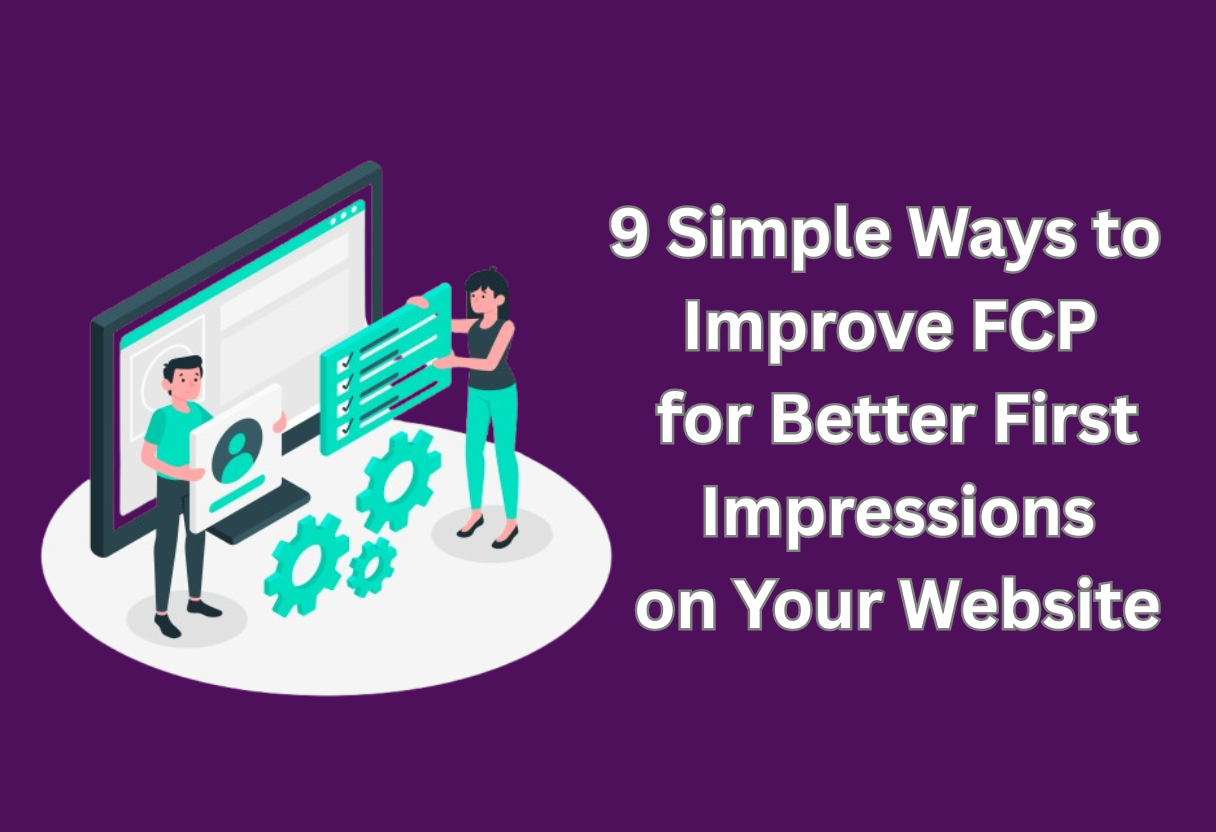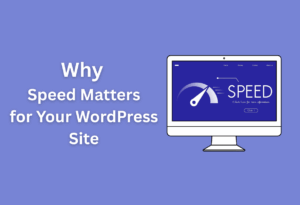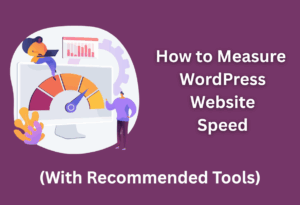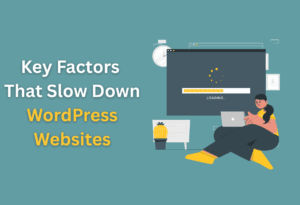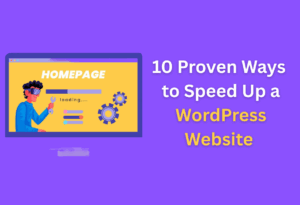FCP, or First Contentful Paint, plays a significant role in how your website is perceived by visitors. If it takes too long for users to see the content, they might leave before fully engaging with your site.
In this blog post, you’ll discover nine simple ways to enhance your FCP, ensuring that you make a positive impression right from the start. By implementing these strategies, you can provide a smoother user experience and boost your website’s overall performance.
Understanding First Contentful Paint (FCP)
As you navigate the world of web performance, it’s imperative to familiarize yourself with First Contentful Paint (FCP), a key metric that measures the time it takes for your website to display any content. This can be text, images, or any other visual elements displayed on the screen. FCP is part of the set of web vitals that assess how quickly users can perceive a visual response to their actions, ultimately influencing their first impressions of your site.
Definition of First Contentful Paint
Around the web development community, First Contentful Paint (FCP) is recognized as a critical performance metric that highlights the moment when a browser renders the first piece of content from your webpage. By measuring the time from navigation start to the moment content is first painted on the screen, you gain insight into how quickly your users can engage with your site.
Importance of FCP in User Experience
Paint your website in a positive light by ensuring that FCP is optimized. Users naturally expect a website to load swiftly when they click on a link or enter a URL.
If your site takes too long to show its first piece of content, visitors may become impatient and leave before they even see what you have to offer. A faster FCP creates a smoother user experience and encourages users to stay and explore your site, ultimately leading to better engagement and higher retention rates.
Paint plays an important role in shaping user experience. When your site swiftly presents the first content, it instills instant gratification and signals to users that their time is valued.
A quicker FCP helps you create a more enjoyable browsing experience, increasing the likelihood of users interacting with your content and taking desired actions such as signing up or making a purchase.
How FCP Affects SEO Rankings
An effective FCP not only enhances user experience but also impacts your search engine optimization (SEO) rankings. Websites that provide faster load times tend to rank higher on search engines because they cater better to user expectations and seamless interaction. If users encounter delays in seeing content, they may bounce back to search results, prompting search engines to downgrade your site in rankings.
Understanding the relationship between FCP and your SEO strategy can help you focus on optimizing your site’s performance. Search engines prioritize sites that offer quicker loading times and a better overall user experience, so improving your FCP could lead to higher visibility in search results. This, in turn, can drive more organic traffic to your site and enhance your chances of converting visitors into customers.
Analyzing Your Current FCP Performance
One of the key steps in enhancing your website’s user experience is understanding your current First Contentful Paint (FCP) performance. By analyzing where you stand, you can take informed actions to improve load times and create better first impressions. Knowing how your FCP metrics stack up against industry benchmarks will guide strategic decisions for optimization and enhancement.
Tools for Measuring FCP
Above all, using the right tools will provide you with reliable data on your site’s FCP. Tools like Google PageSpeed Insights, Lighthouse, and WebPageTest allow you to measure how quickly content is rendered to users. These tools provide insights not just on FCP but also on overall performance, offering a comprehensive overview of your website’s efficiency.
Interpreting FCP Metrics
To effectively enhance your FCP, understanding the metrics is vital. First Contentful Paint is measured in seconds and indicates how long it takes for the first piece of content to appear on the screen. A lower FCP is generally better, as it means users see something engaging sooner, enhancing their experience right from the start.
Analyzing your FCP metrics over time will help you identify patterns and areas needing improvement. For instance, if your FCP improves with each optimization effort, then you’re moving in the right direction. Pay close attention to user feedback and engagement to assess whether faster load times are positively affecting the user experience on your site.
Identifying Bottlenecks Affecting FCP
With a clear idea of your current performance, you can begin identifying bottlenecks that may hinder your FCP. Bottlenecks can occur at various stages, such as rendering performance, server response times, or even third-party scripts that delay content delivery. Recognizing these issues will allow you to address them effectively.
Tools like Chrome DevTools and GTmetrix can help you pinpoint where delays are happening in your site’s loading process. By isolating specific elements, such as heavy images or unoptimized scripts, you can implement targeted solutions to improve your FCP and enhance customer satisfaction on your website.
Optimizing Images for Faster FCP
Many website owners underestimate the impact of images on their site’s First Contentful Paint (FCP). By optimizing images correctly, you can significantly enhance loading times, ensuring that visitors get a swift introduction to your content.
Choosing the Right Image Formats
By selecting the appropriate image format, you can reduce file sizes without sacrificing quality. Formats like JPEG, PNG, and WebP serve different purposes, so it’s necessary to choose wisely based on your image type and the desired balance between clarity and loading speed.
Implementing Image Compression Techniques
About image compression, there are various methods available that help decrease file size while maintaining quality. You can use tools and plugins to automatically compress images during uploads or apply lossless techniques for existing files without losing fidelity.
Compression tools can dramatically reduce the size of your images, leading to faster loading times. Utilizing both lossless and lossy formats allows for versatile options depending on your specific needs. By consistently applying image compression techniques, you can enhance user experience and improve your website’s overall performance.
Utilizing Responsive Images
About responsive images, you should serve different image sizes based on the user’s device and screen resolution. This practice not only improves loading speeds but also provides a better visual experience, minimizing unnecessary pixelation or loading delays.
Techniques such as the `srcset` attribute allow you to specify multiple image sources, which the browser can then choose from based on the screen’s size and resolution. This way, you ensure that users get the optimal image quality without burdening their connection, thus improving load times and enhancing First Contentful Paint metrics.
Efficiently Loading CSS and JavaScript
Unlike images and videos, CSS and JavaScript files can significantly impact your website’s loading speed if not optimized correctly. Efficiently loading these files ensures that users experience quicker page renders, leading to better first impressions. Below are some strategies to enhance loading efficiency.
Minifying CSS and JavaScript Files
Among the first steps to optimize your website’s performance is minifying your CSS and JavaScript files. This process removes unnecessary spaces, comments, and characters, resulting in smaller file sizes. By doing this, you can improve loading times and enhance the overall experience for your site visitors.
Implementing Asynchronous Loading
Along with minification, you can further improve your site’s performance by implementing asynchronous loading for JavaScript files. This allows your HTML content to load without waiting for the JavaScript to finish, resulting in a faster initial rendering for users.
JavaScript files often slow down your site’s loading speed because browsers process them before displaying content. By loading these scripts asynchronously, you instruct the browser to continue loading the page while fetching your JavaScript. This technique not only enhances user experience but also keeps them engaged as your content appears more quickly.
Deferring JavaScript Loading
Beside asynchronous loading, deferring JavaScript loading can also be beneficial. This method postpones the execution of JavaScript until after the page has fully loaded, which can help improve your site’s FCP significantly.
Implementing deferred loading means your users can interact with your website almost immediately, as necessary HTML and CSS content will load first. By ensuring that JavaScript runs only after the main content is visible, you provide a more seamless experience. This small adjustment can lead to noticeable improvements in how quickly your website appears ready for interaction, ultimately enhancing first impressions.
Leveraging Browser Caching
Your website’s performance can greatly benefit from effectively leveraging browser caching. When you utilize caching techniques, you allow users’ browsers to store copies of your website’s files, reducing load times during subsequent visits.
This leads to an improved First Contentful Paint (FCP) as users interact with your website more quickly. Implementing browser caching helps create a seamless experience, enhancing first impressions and encouraging visitors to stay on your site longer.
Understanding Browser Caching
Below are the basics of browser caching: it’s a mechanism where browsers save static resources (like images, JS, and CSS files) locally. When users visit your site, the browser retrieves these files from its cache instead of fetching them from the server, significantly speeding up load times. This results in faster page rendering and an overall enhanced user experience.
Setting Cache-Control Headers
Across your website, setting Cache-Control headers is crucial for optimizing browser caching. These headers instruct the browser on how long to store specific resources in its cache and whether to revalidate them against the server. By defining proper caching rules, you can control the flow of data and improve load speeds for returning users.
This involves configuring your web server to include appropriate Cache-Control directives. For instance, you can specify a ‘max-age’ value to tell the browser how long to keep files in its cache, ensuring users won’t have to download the same files repeatedly, which expedites page loading and enhances the overall user experience on your site.
Utilizing Service Workers for Improved FCP
Along with traditional caching methods, you can enhance FCP by utilizing service workers. These scripts run in the background and can intercept network requests, allowing you to serve cached content even when users are offline or the network is slow. By using service workers strategically, you can significantly boost your website’s responsiveness and speed.
Another advantage of using service workers is their ability to cache dynamic content, ensuring that your users receive up-to-date information while still benefiting from faster load times. When implemented correctly, service workers can improve your website’s performance metrics, leading to faster FCP times and a more enjoyable browsing experience for your visitors.
Reducing Server Response Times
Once again, improving your website’s First Contentful Paint (FCP) often starts with the server. Reducing server response times can significantly enhance the overall user experience, ensuring that your visitors have a smooth and responsive interaction with your site. Focus on strategies that tackle server performance to create a lasting positive impression.
Analyzing Hosting Options
Between shared, VPS, and dedicated hosting services, choosing the right option is vital for optimal server response times. Each type of hosting affects your site’s speed differently, so evaluate your needs carefully, considering factors like traffic levels and resource demands to find the most suitable solution.
Optimizing Backend Processes
Above all, streamlining backend processes can significantly impact your server’s response time. This may involve optimizing your database queries, reducing the amount of processing required to generate views, and minimizing unnecessary data manipulation. Small changes can lead to much quicker server responses.
In fact, you can enhance backend performance by implementing caching mechanisms and reducing the number of server requests needed to load a page. Simplifying your application architecture and leveraging efficient coding practices will also improve processing times, allowing for a swifter response to user requests. This ultimately leads to better FCP and user satisfaction.
Utilizing Content Delivery Networks (CDNs)
Above all, employing a CDN can significantly lower server response times by distributing content closer to your visitors. By storing cached copies of your site’s resources in multiple locations around the world, a CDN helps your users access data more rapidly, enhancing their experience.
It’s necessary to recognize that a CDN not only speeds up the delivery of content but also offloads traffic from your primary server. This alleviates strain during high-traffic periods, allowing your main server to handle requests more efficiently. Integrating a CDN into your website can thus lead to notable improvements in FCP and overall performance, contributing to better first impressions for your audience.
Continuous Monitoring and Improvement
Keep your website’s performance at its peak by adopting a culture of continuous monitoring and improvement. This involves tracking your First Contentful Paint (FCP) metrics regularly and making adjustments as needed to ensure an optimal user experience.
Setting Up Performance Monitoring Tools
Below, you can find various performance monitoring tools that are necessary for tracking your FCP. Tools like Google PageSpeed Insights, WebPageTest, and Lighthouse provide real-time insights and actionable recommendations that can help you identify areas for improvement.
Regularly Reviewing FCP Performance
For optimal results, it’s important to regularly review your FCP performance to identify any fluctuations or issues. Periodic assessments allow you to spot performance drops that may have occurred due to updates, changes, or external factors affecting load times.
In fact, regular evaluations of your FCP allow you to refine your strategies continually. By analyzing your site’s performance trends over time, you can make informed decisions on what optimizations to prioritize, ultimately enhancing user experience and engagement.
Staying Updated with Best Practices
After establishing performance monitoring, staying updated with the latest best practices in web performance is necessary. Trends and technologies evolve rapidly, and what worked last year may not be effective today.
At the same time, being aware of emerging trends and tools can give you a competitive edge. Follow industry leaders, subscribe to relevant blogs, and engage in community discussions to keep your knowledge fresh, ensuring your website remains optimized and user-friendly over time.
To wrap up
With these considerations, you can significantly enhance your website’s first contentful paint (FCP) and create a more favorable first impression for your visitors. By optimizing images, leveraging browser caching, and minimizing server response times, you can improve load times and user experience.
Ensure you prioritize mobile responsiveness and streamline your code for better performance. Implementing these nine simple ways will not only help engage your audience but also positively impact your site’s overall metrics and search engine ranking.

